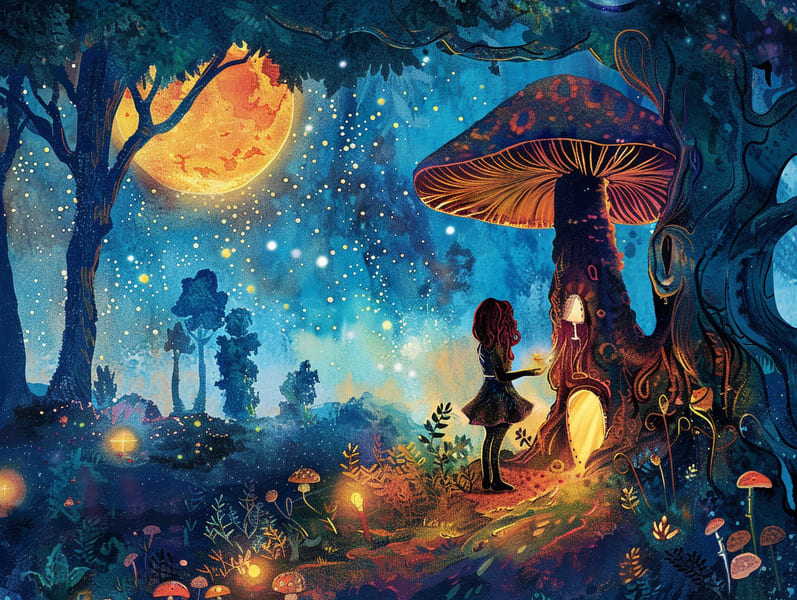
Vintage fairy tales have deep roots. These narratives have been passed down from one generation to the next centuries before they were ever recorded. They arose from a variety of cultures, including Eastern traditions. They were initially conveyed among mature audiences, often carrying themes and messages relevant to the societal norms and beliefs of the time.
The Grimm brothers, the two Grimm brothers, were among the first to collect many of these beloved fairy tales. Their compilation, "Grimm's Fairy Tales," included tales like "Cinder Maid," "Little Brother and Little Sister," and "Schneewittchen," which have since become staples in the world of famous fairy tales. Similarly, the Danish author's delightful narratives, such as "The Little Mermaid," and "The Little Duckling," have gained the love worldwide, establishing their place in the pantheon of famous fairy tales.
Though they are centuries old, traditional fairy tales remain as applicable as ever, especially as children's bedtime stories. These fantastical tales are now available in different formats, including artistically illustrated books, magical animations, and free fairy tales online.
Their unwavering allure can be ascribed to several fascinating points:
Key Lessons: Ancient fairy tales often convey important moral lessons. Tales like "The Boy Who Cried Wolf" teach the significance of truthfulness, while "The Tortoise and the Hare" highlight the merits of persistence and humbleness. These tales offer children clear distinctions between good and bad, forming their moral compass in a kind yet lasting way.
Sympathy and Perception: Traditional fairy tales frequently present figures facing trials and tribulations, motivating readers to sympathize with their struggles and cheer for their triumphs. For instance, "Beauty and the Beast" shows us the virtue of seeing beyond looks to realize the inner core of a being, promoting warmth and comprehension.
Cultural Knowledge: Many traditional fairy tales are saturated in the cultural contexts from which they emerged. Engaging with these fairy tales can provide captivating looks into different social structures, strengthening a sense of international awareness and comprehension.
Inventiveness and Fantasy: The extraordinary elements in fairy tales—talking beasts—ignite children’s fantastical thinking. These tales guide readers to imaginary realms, enhancing innovative ideas and a sense of fascination that continues a lifetime.
Timeless fairy tales are not only mesmerizing but also pedagogical. They act as magical tools in developing various cognitive and affective skills in children. When old fairy tales are read aloud, they cultivate language skills by teaching new words and complex sentence structures. This practice also fosters listening skills and focus, as the young pay close attention, prepared to see what happens next.
Furthermore, talking about the themes and characters of ancient fairy tales can strengthen evaluative skills and critical thinking. Children are shown to discern patterns, forecast, and realize cause and effect. These discussions also ease young readers speak out their thoughts and feelings, contributing to their emotional intelligence.
In today’s online age, the presence of internet fairy tales has made these tales more within reach than ever. Web-based platforms and mobile apps feature wide arrays of traditional fairy tales that can be seen or listened through anytime, anywhere. Fairy tales narrated are particularly in demand, supplying an interactive way for children to enjoy these whimsical stories. Audiobooks and read-aloud videos bring characters and settings to life, often augmented by fantastical musical scores and harmonies that raise the storytelling journey.
The lasting allure of classic fairy tales lies in their ability to adjust to modern society while sustaining their main lessons. Contemporary renditions of these stories often spotlight more multicultural protagonists and modern settings, making them relatable to today’s audience. However, the basic principles of courage, empathy, and integrity remain unchanged, continuing to resonate with young readers of all ages.
Timeless fairy tales also offer a sense of comfort and familiarity. They showcase a structured narrative with a plain beginning, middle, and end, often concluding with the ending of conflicts and the triumph of good over evil. This constancy can be encouraging for kids, providing a sense of invariability in an unpredictable world.
Traditional fairy tales continue to spellbind and coach new generations, click here maintaining their allure and significance in modern society. As kids' bedtime tales, they put forth a perfect blend of charm and understanding, sustaining moral values, empathy, and creativity. The availability of free fairy tales online and the popularity of fairy tales read out loud assure that these timeless tales remain reachable to new generations.
By safeguarding and passing on these stories, we continue to honor the rich tapestry of cultural legacy and cultural heritage. Whether you are seeing a beautifully illustrated book, experiencing a web collection, or listening via an read-aloud story, the majesty of timeless fairy tales is always within reach. These tales demonstrate of the unceasing magic of tales and its ability to connect us across eras and regions.
Regardless if you are exploring a vibrantly illustrated book, seeing a internet collection, or listening via an audiobook, the grandeur of traditional fairy tales is always within reach.
These narratives reveal of the continued influence of fairy tales and its ability to join us across time and space, making a tie that delights and instructs alike.